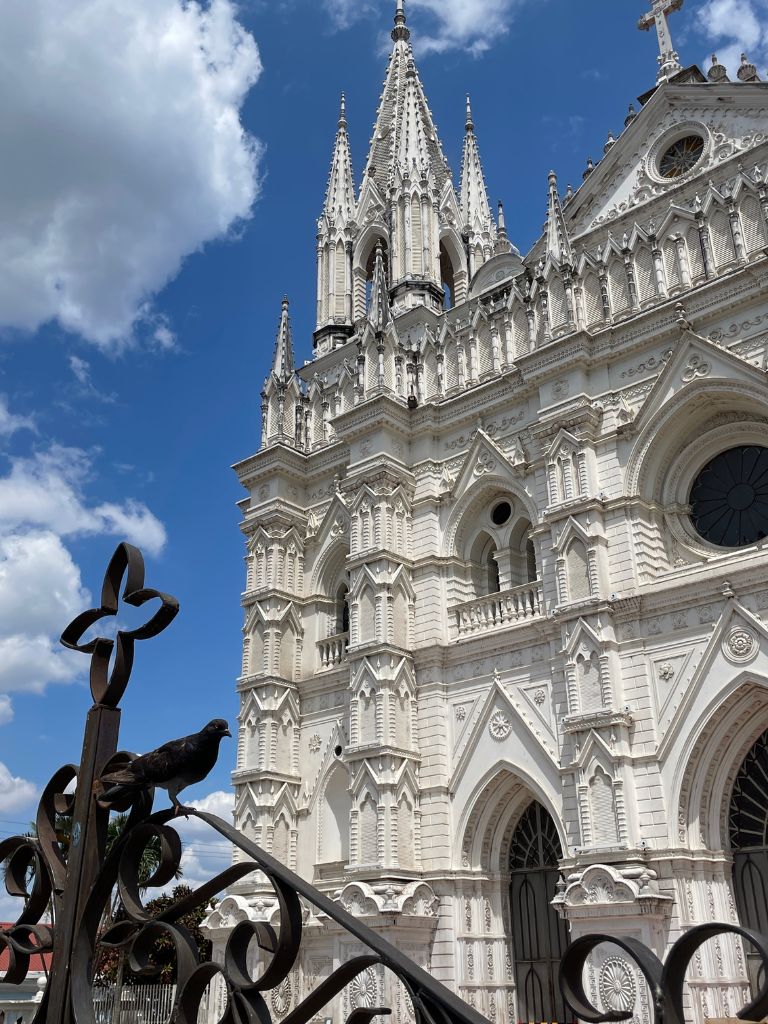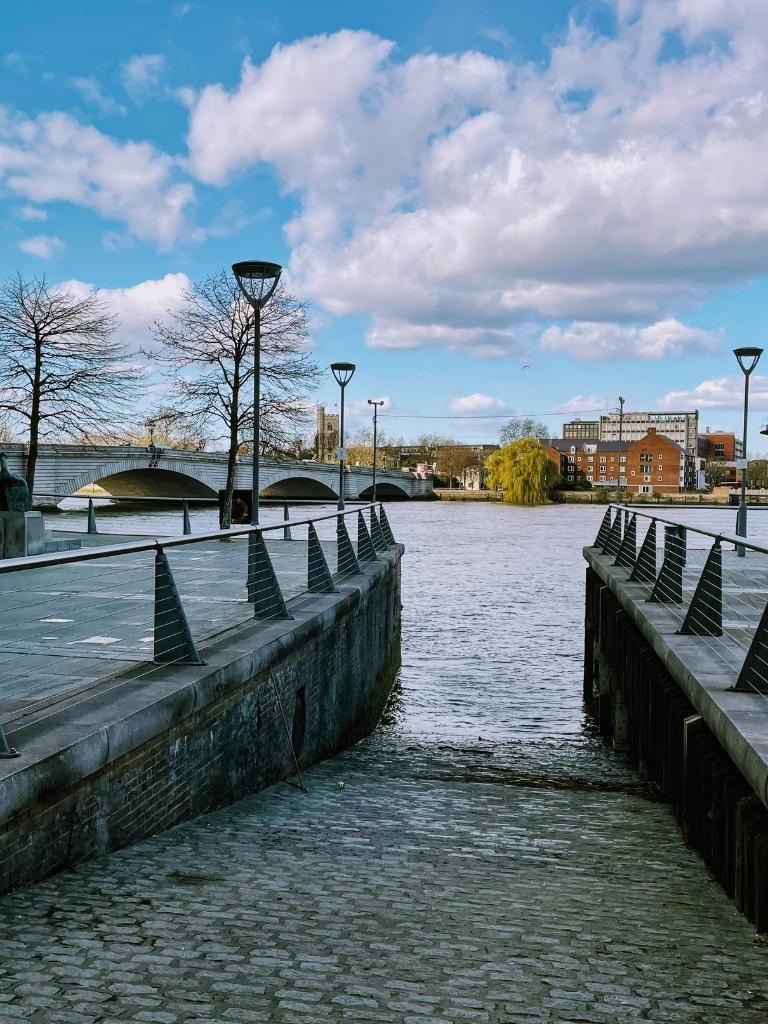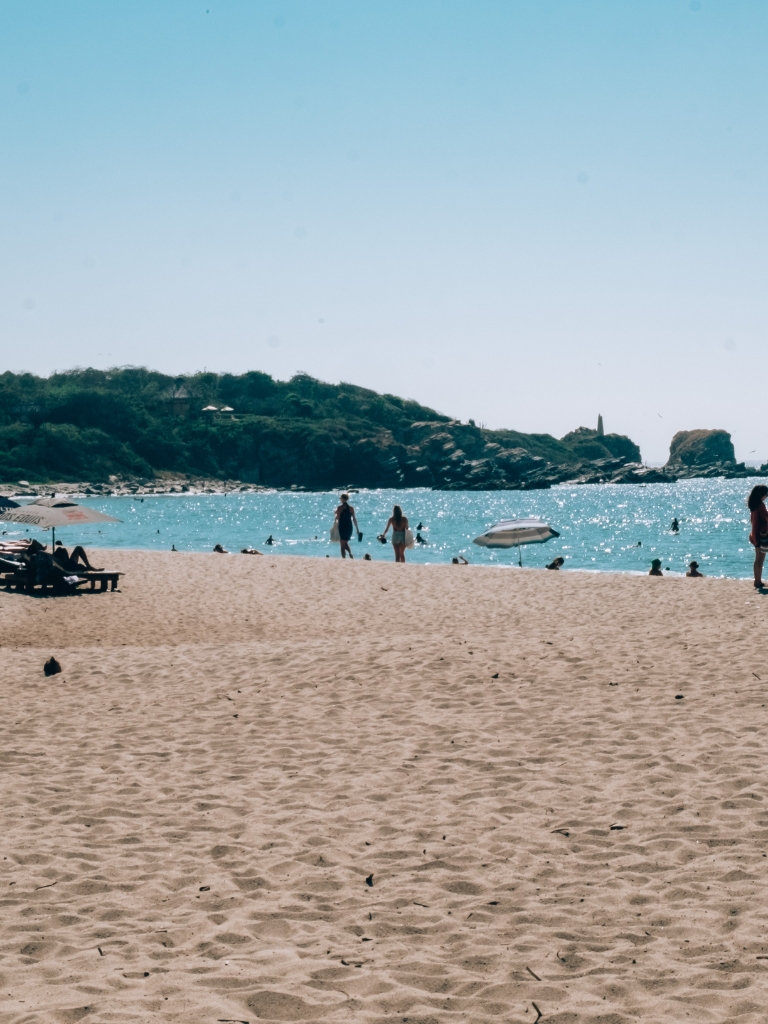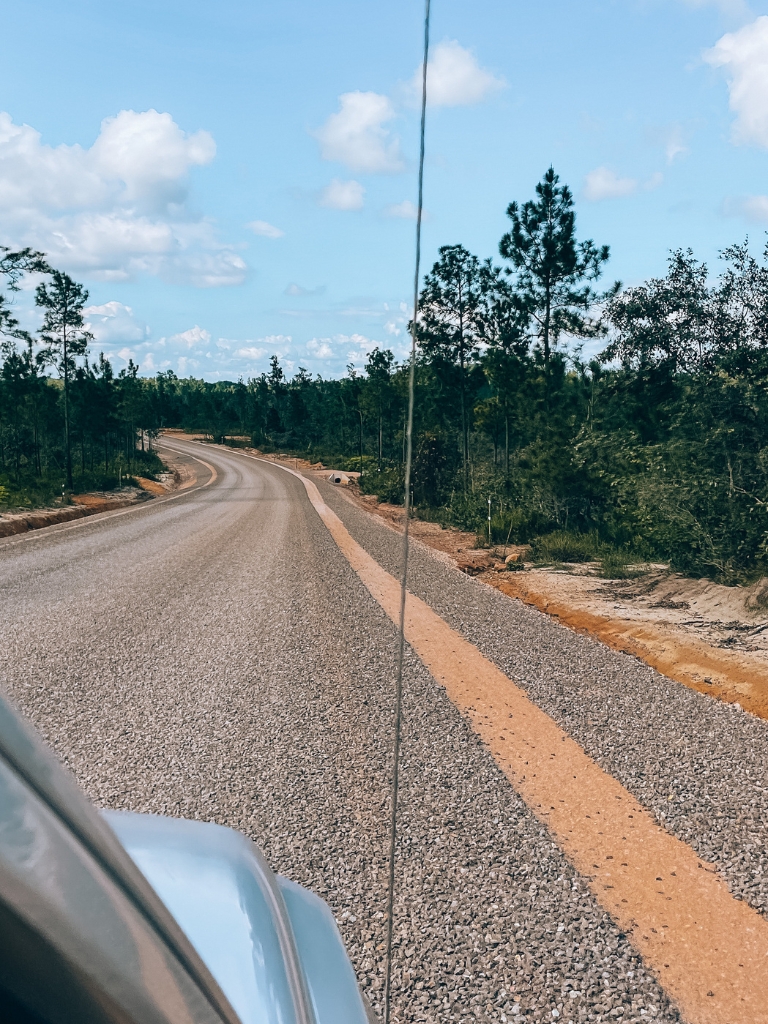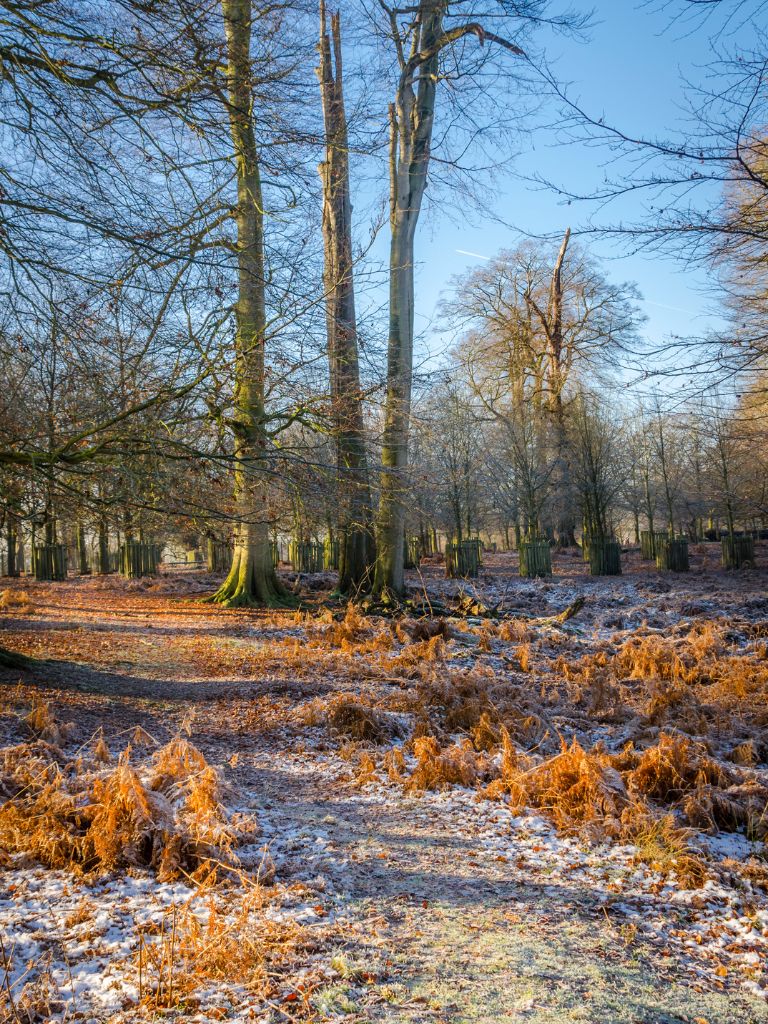Interrailing Switzerland: Route, Itinerary and Guide
Some links in this post contain affiliate links. I receive a small commission if you use the links at no extra cost to you! Happy reading 😀
If you’re interrailing Switzerland, you’re in for an amazing experience. Travelling around Switzerland by train is easily one of the best ways to see the country, especially if you’re visiting for the first time!
The trains are clean, efficient and fast, and looking out the window as you travel through the country is an activity in itself! By interrailing around Switzerland and following one of these routes, you’ll get to see all the major cities, as well as some of the smaller towns and villages. And, of course, you’ll have plenty of opportunities to sample Swiss food and drink along the way.
In this post, I’ll outline everything you need to know about travelling Switzerland by train, and how to use your interrailing pass.
If you’re in a rush, skip to the section that interests you the most from the contents. And if not, grab a cuppa, put your feet up, and let’s get planning an EPIC Switzerland itinerary!
🚝 Need to buy your interrailing pass? I recommend checking this website for the best discounts and deals!
Interrailing Europe? I’ve also written guides for Italy, Spain and France. Check them out as well as this interrail Switzerland itinerary!
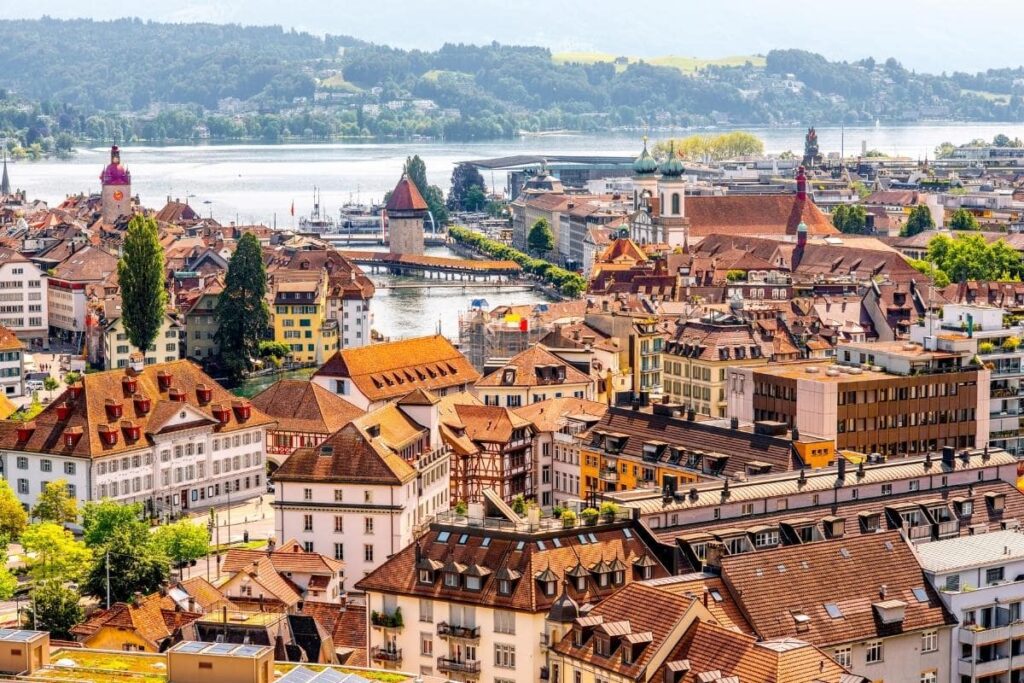
Not sure which backpack to buy for interrailing Europe? Read my post to find the best backpack for you!
Interrailing Switzerland: A Summary
There are several different train routes that crisscross Switzerland, each offering passengers a unique way to experience the country’s natural beauty.
From the Glacier Express route to the Golden Pass Line, they’re a great way to use your interrail pass or Swiss Travel Pass, and private railways include high-speed trains, regional trains and slow trains with seat reservations.
The Golden Pass Line is one of the most popular tourist routes. It takes passengers through some of Switzerland’s most iconic scenery, including the snow-capped Alps and pristine lakeside villages. For those looking for a more adventurous journey, the Glacier Express is the perfect choice.
Slowly winding its way through mountainous terrain, the Glacier Express provides riders with breathtaking views of some of Switzerland’s most impressive glaciers.
Interlaken is one of the best places in Switzerland to access the country’s incredible rail system. The Interlaken Ost train station is a hub for two of Switzerland’s most iconic trains – the Voralpen Express and the Bernina Express.
The Voralpen Express winds its way through the stunning landscapes of central Switzerland, while the Bernina Express takes passengers on a journey through the Alps, offering unparalleled views of some of Europe’s highest peaks.
Whether you’re looking to explore Switzerland’s natural beauty or simply want to sit back and enjoy the ride, Interlaken is the perfect place to hop aboard one of these legendary trains, which I’ll delve into a bit further later!
Then there is the Gotthard Panorama Express, which interlaces Switzerland’s stunning mountains, valleys, lakes and meadows. And, as the name suggests, there are panoramic windows in every carriage so you can make the most of the views!
The trip takes around three hours, and there are plenty of stops along the way so you can explore some of the highlights of the route, including the Devil’s Bridge and the Reichenau Falls.
🤩 NOTE: All train lines can be used with the Interrail Pass (you may just need a seat reservation) or the Swiss Travel Pass. BUY YOUR PASS HERE!
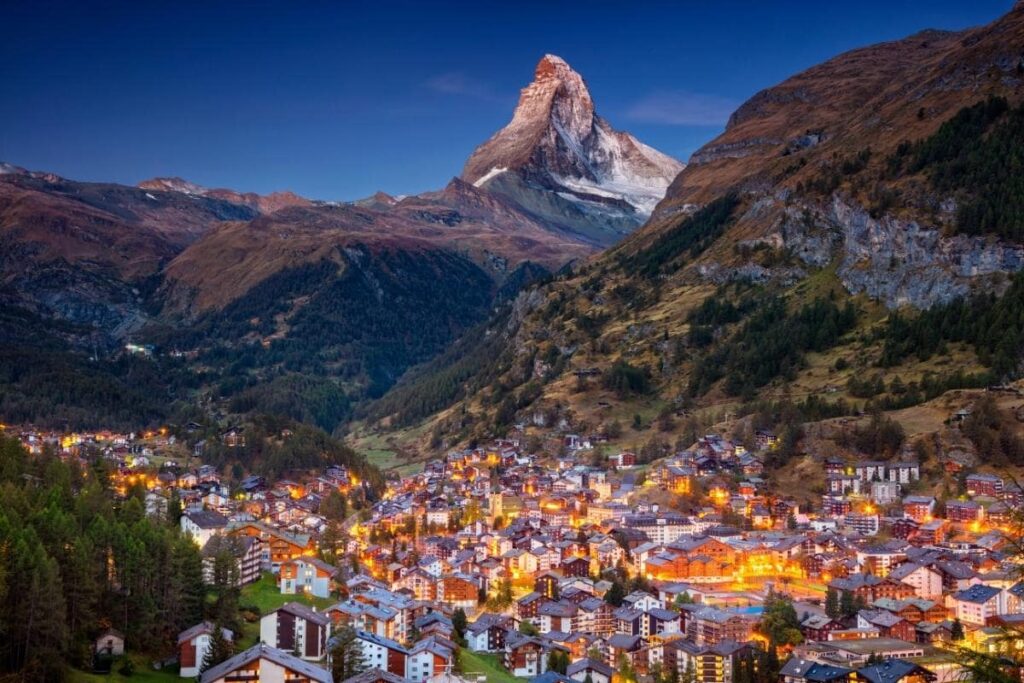
Where to stay in Switzerland
Choosing where to stay in Switzerland all depends on how much you want to spend.
- Hostels: If you’re on a tight budget, I recommend Hostelworld for booking shared dorm rooms. Unfortunately, even the dorm rooms are more expensive than in most other European countries. You’ll be paying around £30-50 for a shared dorm, or £100+ for privates.
- Hotels: If you do have a higher budget to splurge, hotel rooms cost over £100 a night. Luxury hotels? You’re looking at £400+.
- Airbnbs: Again, not for a budget backpacker, but if you’ve got the money to spend, I’d recommend them. You can also get some really unique and quirky stays if you look hard enough!
- Camping: One of the cheapest options is wild camping in Switzerland. Wild camping is legal in the mountains and you can book campsites all over the country. Just be sure to book campsites well in advance.
Best hostels in Switzerland for backpackers
Whilst there will be many hostels all over Switzerland to stay in as a backpacker, these are some of the best. All of the hostels listed are perfect for solo travellers and couples who are looking to meet other backpackers whilst interrailing Switzerland.
Zurich: Krone Zurich Pop Up Hostel BOOK NOW
Interlaken: Backpackers Villa Sonnenhof BOOK NOW
St Moritz: Hostel By Randolins BOOK NOW
When is the best time to visit Switzerland?
Switzerland is a country that has something for everyone, no matter what time of year you visit. Each season has its own unique attractions and events, so it really depends on what you’re looking for on your trip.
Spring is a great time to visit if you love to ski or snowboard, as the slopes are open until late April.
In the summer, Switzerland is perfect for hiking and biking, with beautiful wildflower meadows and crystalline blue lakes.
Autumn brings stunning foliage and cosy festivals celebrating everything from wine to chocolate, while winter transforms the country into a veritable winter wonderland.
So when is the best time to visit Switzerland? The answer is any time of year, and it’s totally down to you!
How to book trains in Switzerland
Switzerland’s trains are reliable, comfortable, and efficient, making them the perfect way to travel around the country.
Here’s everything you need to know about booking Switzerland train tickets:
- First, you’ll need to decide on your interrailing pass. Then, look at the type of trains you want to take when travelling across Switzerland.
- There are several different types of trains in Switzerland, including high-speed, regional, and mountain trains.
- Once you’ve decided which type of train is right for you, you can book your tickets online or at a Swiss train station.
- When booking online, be sure to use a reputable website like SBB.ch or Swiss Railways. If you have an interrail pass (which can easily be purchased here), booking just means getting your seat reservation.
- Or, if you’re planning on taking multiple trains in Switzerland, it’s worth considering a Switzerland Rail Pass. A Switzerland Rail Pass allows you unlimited travel on most Swiss trains for a set period of time.
- You can purchase a Switzerland Rail Pass at any Swiss train station or online.
- Ensure you’re carrying your passport at all times on Swiss trains too!
Interrail Pass Benefits in Switzerland
Buying an interrail or Eurail pass doesn’t just mean train travel in Switzerland, it’s actually a whole ton of other things! Let’s break them down so you can make the most of the discounts:
- Up to 50% off ferry tickets, with some ferries in Interlaken even being FREE
- Free travel on the metro system in Zurich
- Up to 20% discount on certain hostels
- Around 20% off bike hire in Geneva and other locations in Switzerland
- Up to 50% off private railway journeys
- 25% discount on all Mountain Excursions with Jungfrau Railways
- Cheaper bus travel between Germany and Switzerland
- A free journey on RegioExpress Lötschberger (visit here for info)
Always carry your interrail pass with you to see if you can get a discount!
➡ BUY YOUR INTERRAILING PASS NOW!
Interrailing Switzerland: The Routes
Below I have listed 3 possible train routes around Switzerland, with some information underneath. All routes start in Zurich (best for international arrivals), but can be changed to however you see fit.
All routes have the flexibility of staying in each location for at least 2 nights. If you require less/more, just adjust the route accordingly.
You can use these routes with your interrail pass (European residents), Eurail pass (non-European residents) or Swiss travel pass (both European and non-European residents).
I will also list some day trips from certain areas to ensure you make your Switzerland trip the adventure of a lifetime!
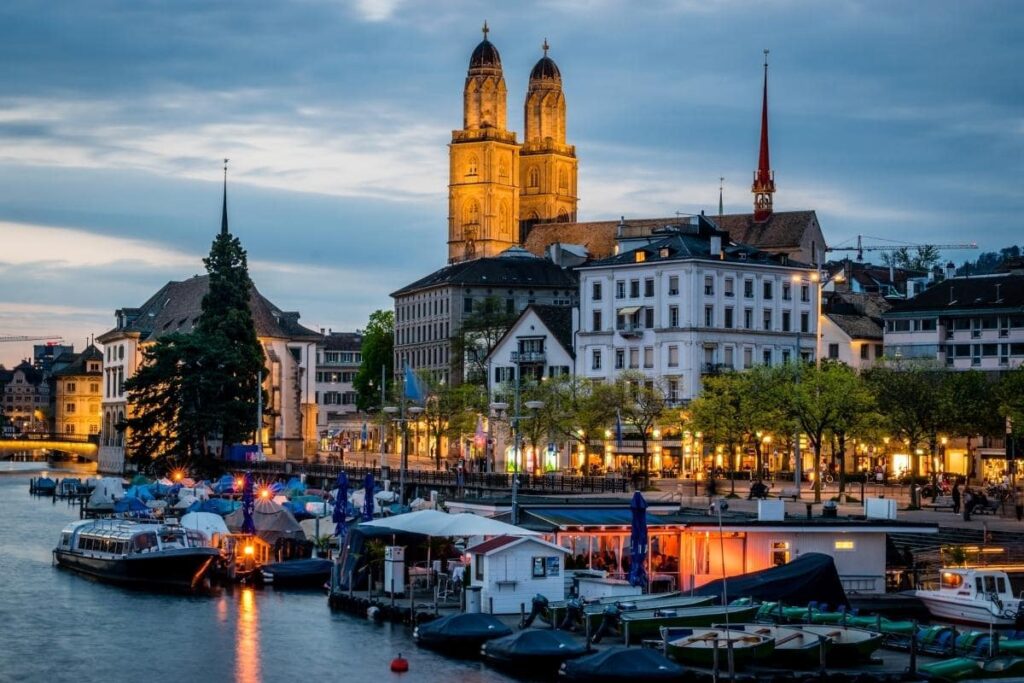
Interrailing Switzerland Route 1
🇨🇭 Duration: Two weeks
🚇 Four locations in Switzerland: Zurich > Interlaken > Spiez > Zweisimmen > Montreux
Start your Switzerland two-week route in Zurich. Board the train from Zurich to Interlaken on the “pink” line (which takes about 2.45 hours) and then carry on to the adventure spot of Spiez. Continue to Zweisimmen, known for its mountains and being the gateway to the Gstaad region.
Finish your trip by arriving in Montreux, which is one of my favourite spots in Switzerland!
The town borders Lake Geneva and is known for its beauty and traditional Swiss buildings. I spent a few nights here, but could have spent way longer!
🚝 Need to buy your interrailing pass? I recommend checking this website for the best discounts and deals!
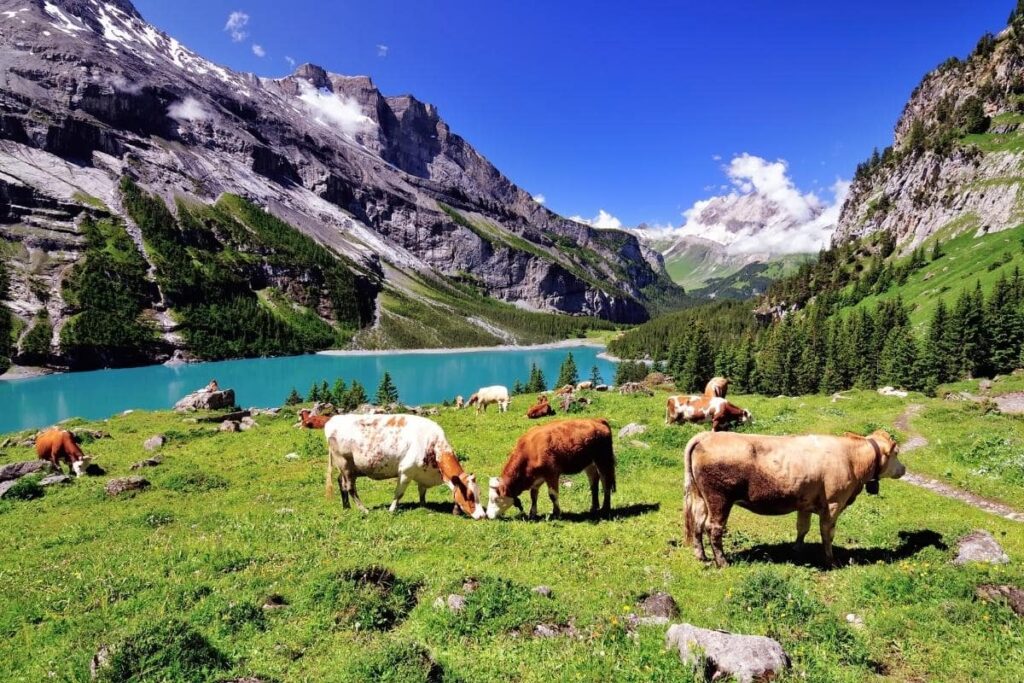
Interrailing Switzerland Route 2
🇨🇭 Duration: Three weeks
🚇 Eight locations in Switzerland: Zurich > Basel > Geneva > Bern > Interlaken > Spiez > Zweisimmen > Montreux
This route includes a stop-off in Basel, which is Switzerland’s third most populous city, and Geneva, its second! Both have so much to offer and are great for city fans. The route then continues to Bern, known for its cool architecture and medieval clocktower, following on to Interlaken and some of the most scenic spots.
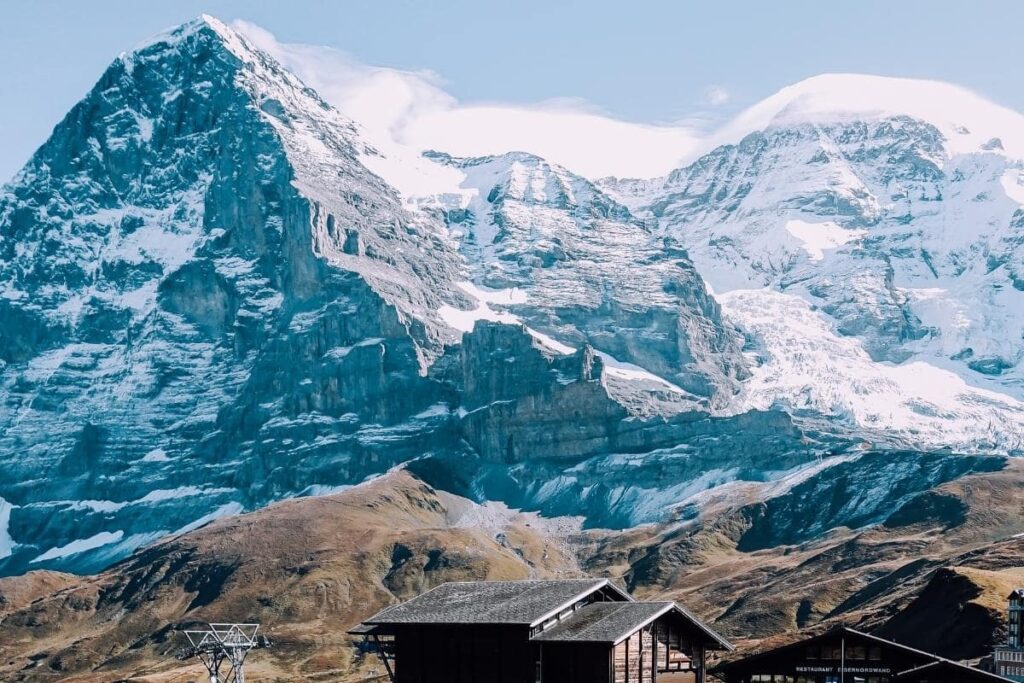
Interrailing Switzerland Route 2
🇨🇭 Duration: Four weeks
🚇 Eleven locations in Switzerland: Zurich > Basel > Geneva > Bern > Interlaken > Spiez > Zweisimmen > Montreux > Zermatt > St Mortiz > St Gallen > Zurich
There are many destinations in this itinerary, so it may seem overwhelming! If this is too many locations for you, I recommend following the route up until at least Zermatt. From there, some of the trains are a bit longer (but so worth it if you have the time!)
🤩 NOTE: If you have extra time, schedule a trip to Lugano and Lucerne.
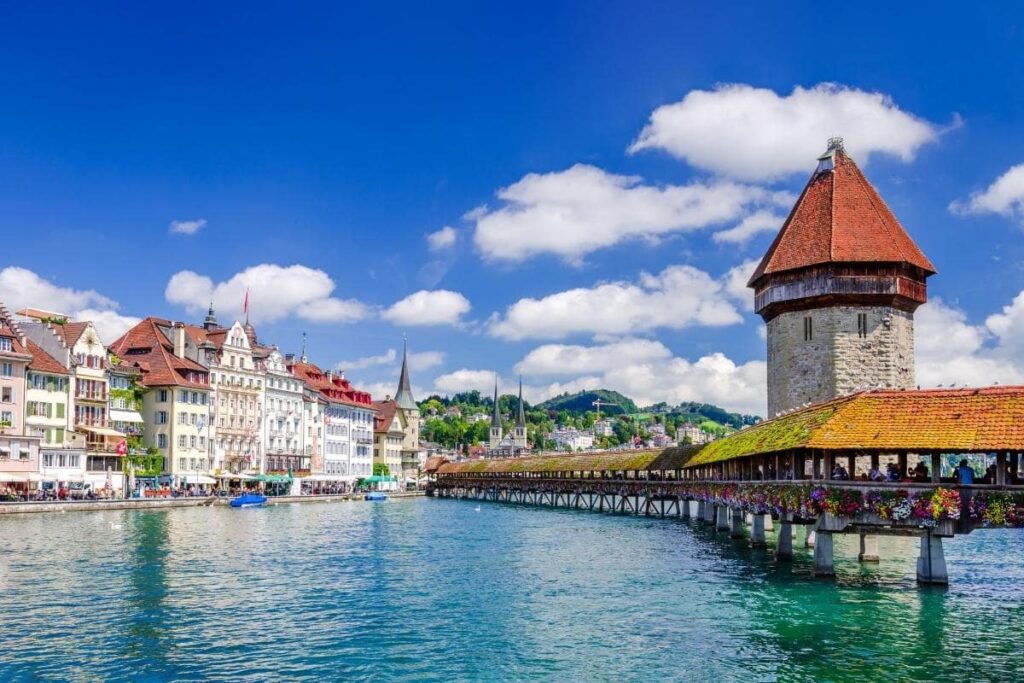
Interrailing Switzerland: Train Durations
Let’s break these train journeys down into times, so you have more of an idea of how long you’ll be travelling.
Zurich > Interlaken: 2.45 hours
Zurich > Basel: 50 minutes
Interlaken > Spiez: 20 minutes
Spiez > Zweisimmen: 45 minutes
Zweisimmen > Montreux: 2.50 hours
Montreux > Zermatt: 3 hours
Zermatt > St Mortiz: 7 hours
St Moritz > St Gallen: 3.5 hours
St Gallen > Zurich: 1 hour
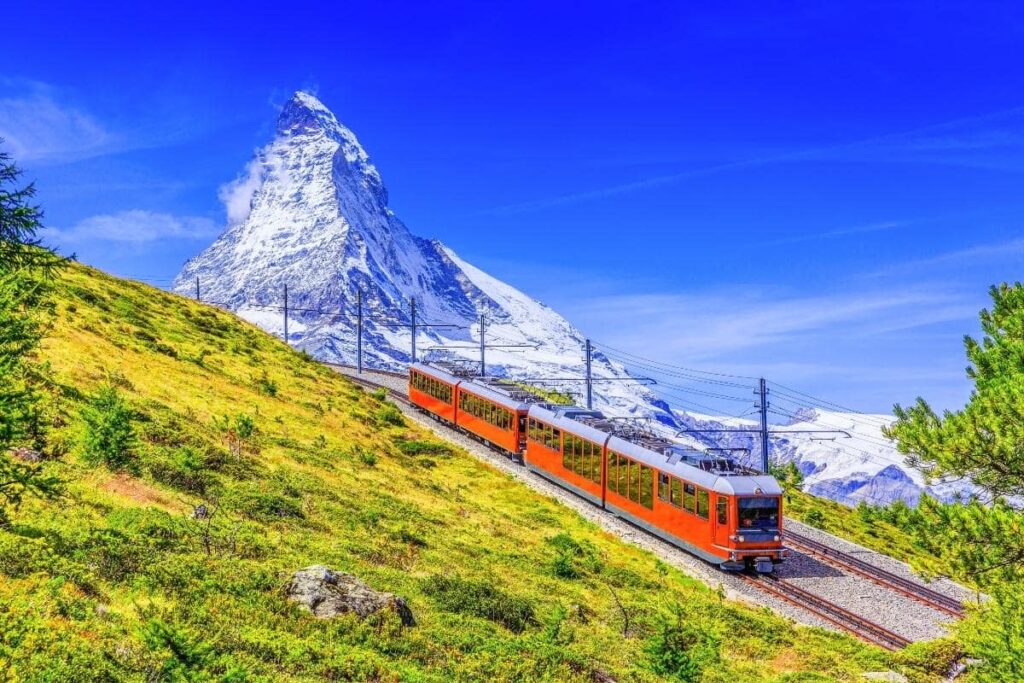
Need to know about train travel in Switzerland
What do you need to know about train travel in Switzerland? Let’s break down some facts.
- The service on Swiss trains is excellent, and the trains are some of the most punctual in the world (they won’t run a minute late!).
- There’s no need to worry about getting lost; the Swiss rail system is one of the most efficient in Europe.
- You can also use buses, trams, boats, cable cars and mountain rails around Switzerland.
- Seat reservations are required on most Swiss trains.
- Trains in Switzerland are safe, so if you’re solo travelling, there’s no need to worry about safety. Just use your common sense, as always!
- All routes and timings can be viewed on the SBB app. If you are interrailing Switzerland (or using your Eurail pass) I highly recommend downloading this for your trip.
- There are lockers at nearly every main city station, making it perfect if you want to dump your backpack for the day.
- Ensure you are sitting in the class you have booked your reservation for, and if the doors aren’t opening at a stop, just press the button next to the door to open.
- The views from the train windows are incredible. Put your phone or laptop away and just enjoy it! Travelling Switzerland by train is one of the best ways to see the country.
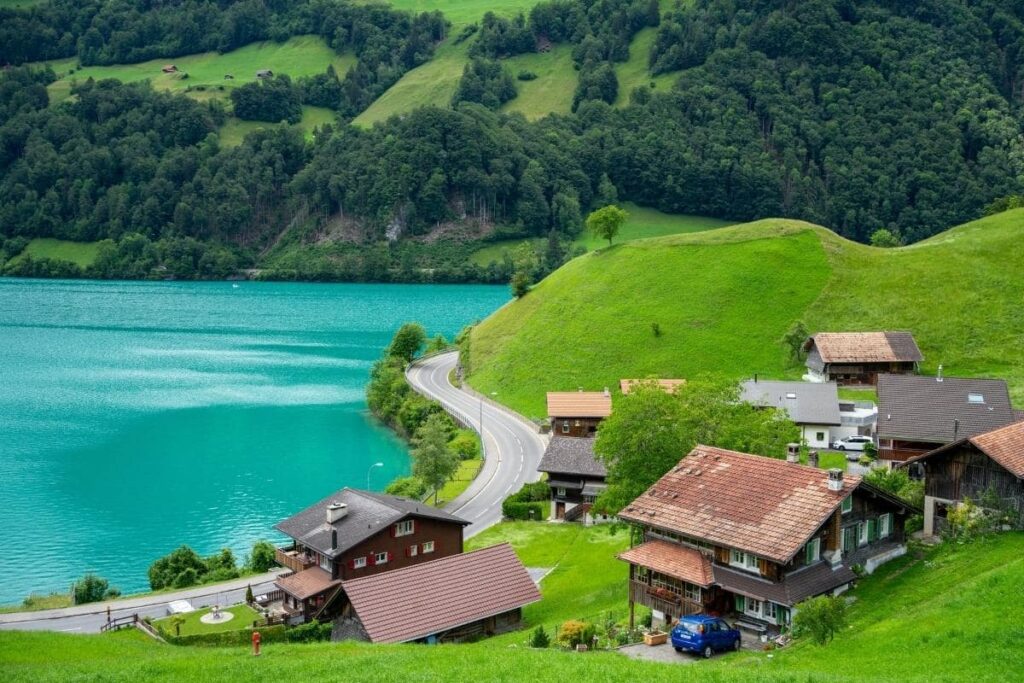
Can you use your interrail pass in Switzerland?
Yes, an Interrail or Eurail Global Pass (including other passes) is valid to use in Switzerland. If you’re ONLY visiting Switzerland, I recommend an Interrail One-Country Pass, as it will work out cheaper.
Interrail passes are valid for travel on all of Switzerland’s national railways, so you can easily get around to different destinations.
Your interrail (or Eurail) pass will work on all SBB train services, including regional, high-speed, international and night trains. Some private companies also allow interrail passes, but just check online first.
Whilst interrailing Switzerland, you will have to book seat reservations for most of your trains. Unfortunately, your interrail pass will not cover mountain railways or cable cars, but you may get a discount. Always remember to show your interrail pass when booking.
Plus, an Interrail pass in Switzerland offers discounts on many other attractions, so you can save money while you’re exploring (which I’ll explain later). And if you need any help along the way, the friendly Interrail staff are always happy to assist!
➡ BUY YOUR INTERRAILING PASS NOW!
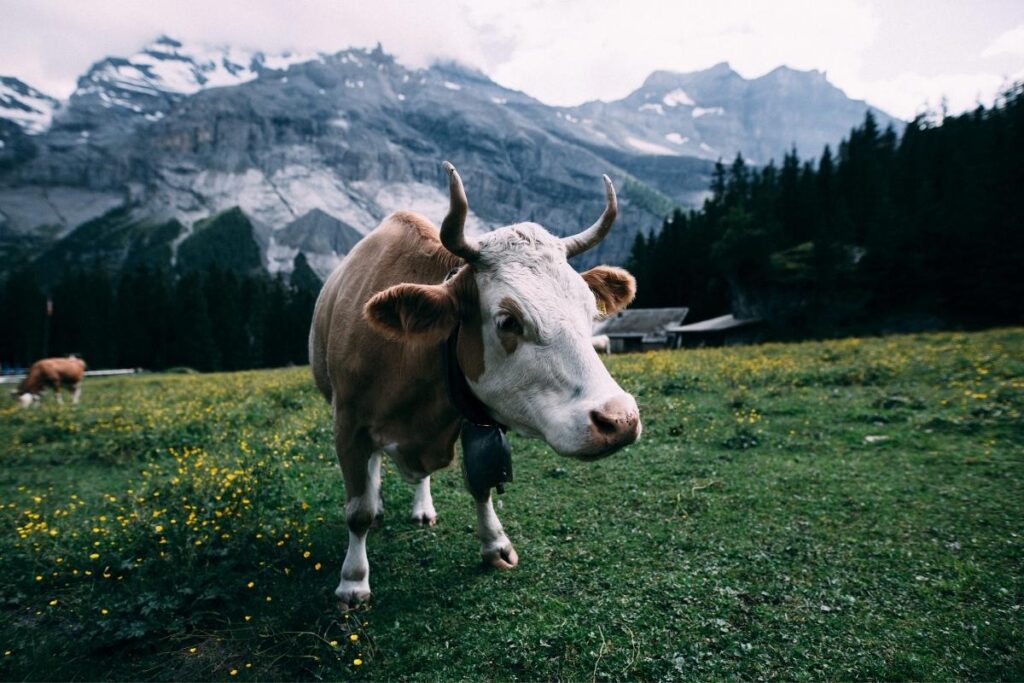
Night trains whilst interrailing Switzerland
Most of the journeys you will make in Switzerland will be short, but there is a chance you might want to board a sleeper train to save money on accommodation and gain back some time to explore.
If you’re arriving from another country like France, Italy, Croatia or Germany, the chances are you would have arrived by sleeper train.
Remember: ALL sleeper trains whilst interrailing require a reservation. Prices range between 20 – 40 EUR.
For example, there are sleeper trains such as:
Berlin > Zurich: 8 hours (OBB Nightjet)
Zagreb > Zurich: 14 hours (Euronight Lisinski)
Amsterdam > Zurich: 14 hours (OBB Nightjet)
Budapest > Zurich: 14 hours (Euronight Sleeper)
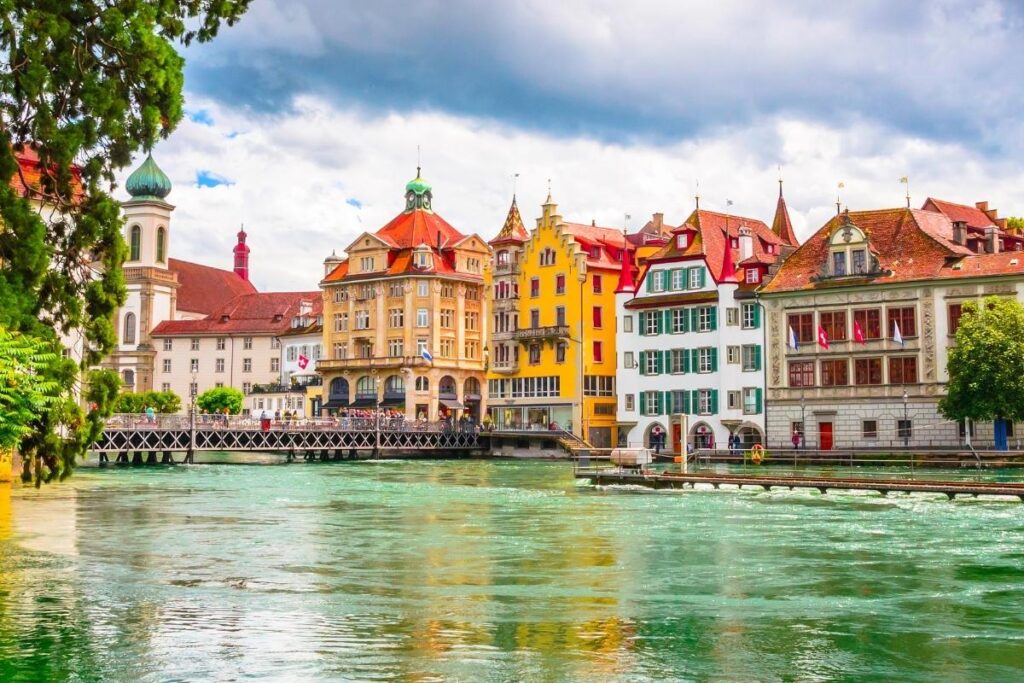
What language is spoken in Switzerland?
There are four official languages in Switzerland; German, French, Italian, and Romansh. All are spoken in different regions.
Swiss German is spoken in the northern, eastern, and central parts of Switzerland, and is spoken by over 63% of the population. This makes it the ‘primary’ language.
Swiss French is the second most spoken language and is mostly spoken in Western Switzerland (like Geneva and Jura).
Italian is spoken in the canton of Ticino and some southern parts of Switzerland. This area is known for having a real Italian feel to it, in the culture and surroundings.
Finally, Romansh is spoken by around 37,000 people in Switzerland. It is spoken primarily in the Rhine Valley of Switzerland.
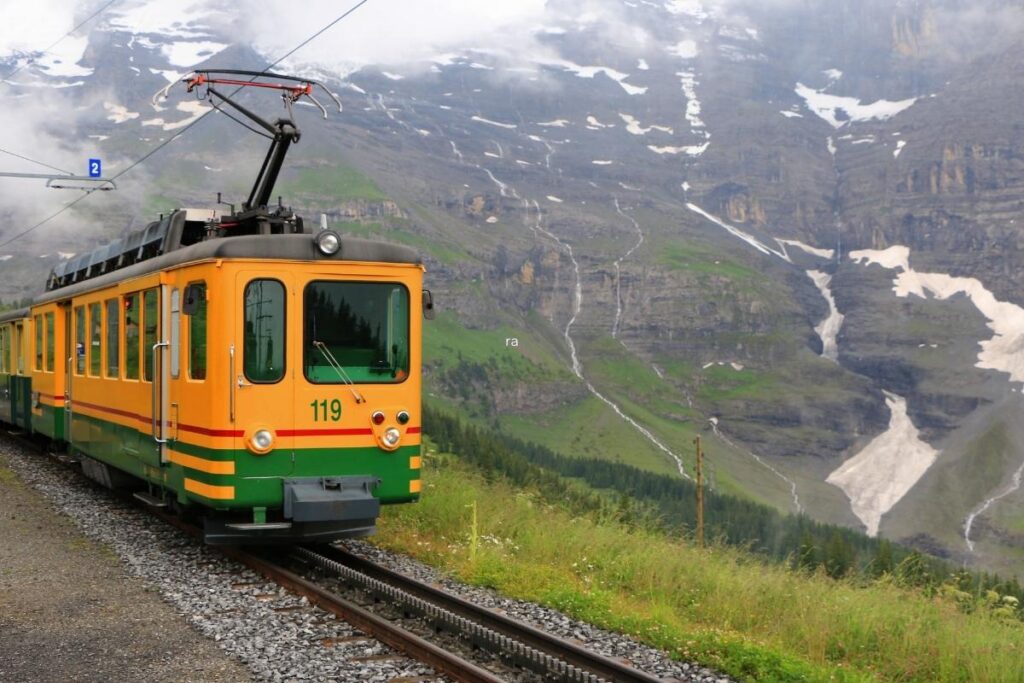
What is Interrailing?
Interrailing means you hop on a train and see as much of Europe as you can! It’s a great way to explore, especially if you’re short on time.
You can buy Interrail passes that allow you unlimited travel for a certain period of time, or you can buy tickets for specific journeys.
The best part about Interrailing Switzerland is that you can go at your own pace – there’s no need to rush from place to place. You can just sit back, relax, and enjoy the scenery! Plus, your interrail mobile pass can always be kept close to hand on your smartphone.
NOTE: There’s a difference between the adult pass, Swiss Travel Pass, Interrail Switzerland Pass, Interrail Global Pass and the separate youth pass. Be sure to check out the differences here.
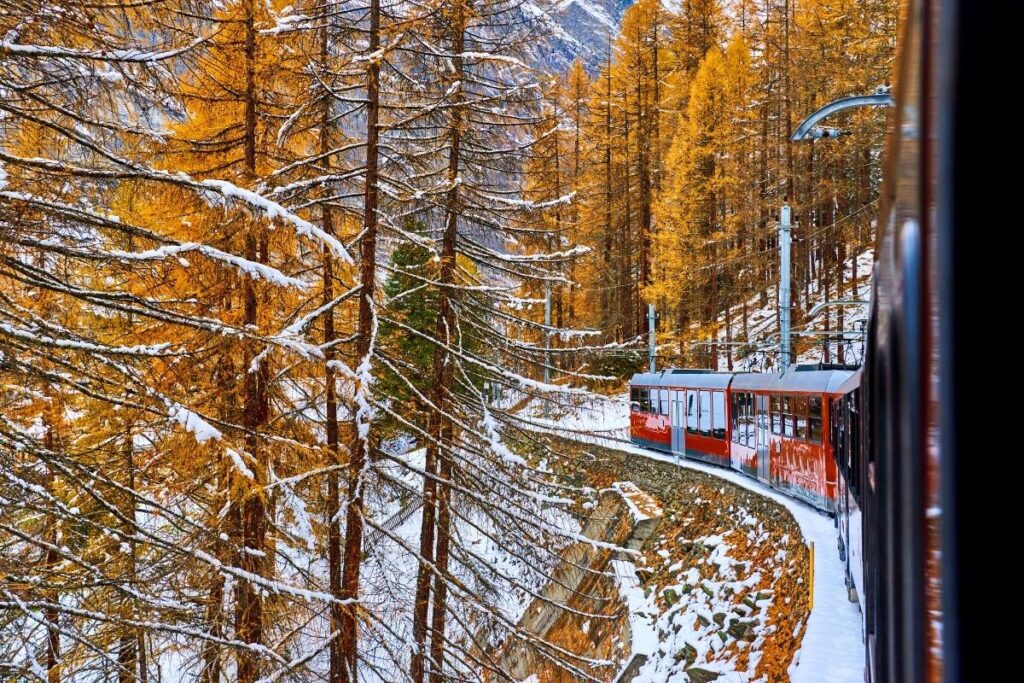
What to pack for interrailing Switzerland
Interrailing Switzerland sounds like a dream – and it is! But there’s a lot to think about before you jet off, like what to pack.
Here are my top tips on what you’ll need to take with you:
- A valid Interrail pass. Make sure you have this first and foremost.
- A map of Switzerland or access to maps on your phone offline.
- Comfortable shoes. You’ll be doing a lot of walking, so make sure you have good shoes!
- Warm clothes. Even in summer, the temperature can drop at night, so pack a few layers just in case!
Staying in hostels? Don’t forget to pack:
- A padlock: to keep your valuables secure when you leave your hostel room.
- A hanging wash bag: to make sure all your toiletries are kept in one place, and won’t get confused with anyone else
- Speakers: because, well, who doesn’t love music? Just make sure everyone in your room gets a chance to pick a song! (And no one minds you playing the music)
- A microfibre towel: Not all hostels will provide you with towels for free. Bring your own to save extra ££.
- Earphones: for loud nights and disruptions to your sleep.
- Flip flops: if you’re using shared showers.
- Eyemask: for uninterrupted sleep.
- World travel adapter or an extension lead: so you’re not using more than one plug!
- Your laptop or tablet: for movie nights, of course! 🍿
You can check out more about packing for interrailing here: What To Pack Interrailing Europe: Packing List Essentials.
Best destinations in Switzerland
Zurich
Zurich is a great city for those who love to explore and be outdoors. There are plenty of things to do, whether you’re looking for an adrenaline-pumping activity or a relaxing day in nature. For those who love to hike, the Zurich area has lots of trails for different hiking levels. Or if you’re looking for something more challenging, you can try your hand at rock climbing or mountaineering!
For water lovers, Zurich also offers plenty of opportunities for swimming, sailing, and windsurfing. And of course, no visit to Zurich would be complete without exploring the Old Town and witnessing the stunning architecture of the city’s many churches and cathedrals.
Ooooh, and if you’re a vegan, be sure to check out the best vegan restaurants in Zurich by Veggies Abroad. You won’t find hidden gems like this anywhere else!
Need a hostel in Zurich? We loved the Krone Zurich Pop Up Hostel. ➡ BOOK NOW!
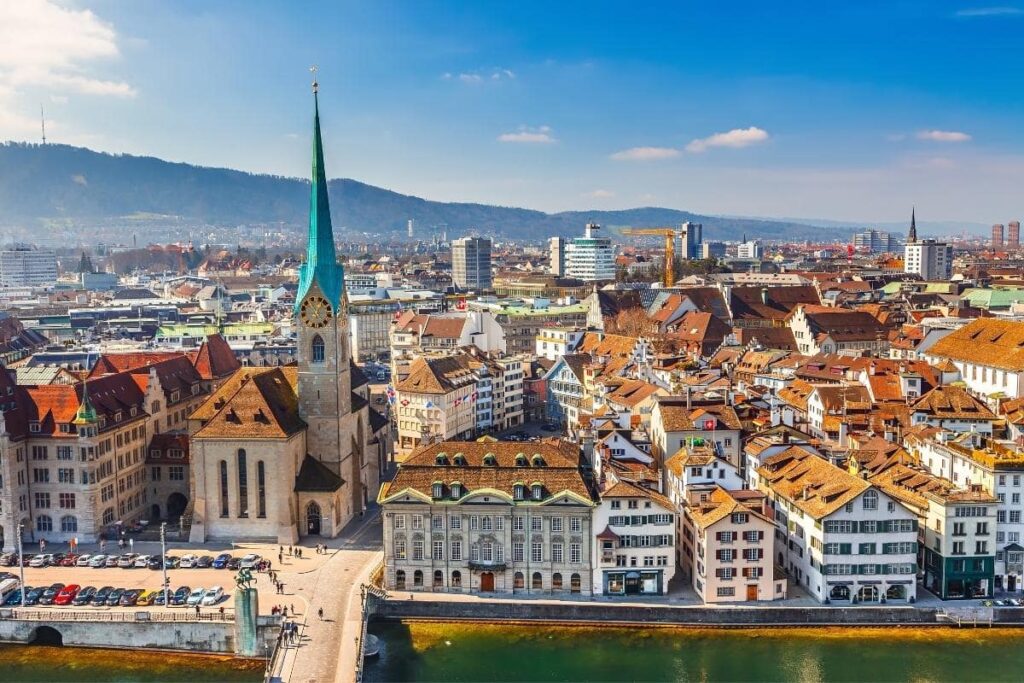
Interlaken
Interlaken is a Swiss town that’s situated between two lakes: Lake Thun and Lake Brienz. It’s a popular destination for tourists who want to experience the beauty of the Swiss Alps. There are plenty of things to do in Interlaken, whether you’re looking for an adventure or a simple walk around.
If you’re feeling adventurous, you can go paragliding, canyoning, or skydiving. Or, if you’d prefer to stay on solid ground, you can go hiking, biking, or take a cable car ride up to the nearby mountains. It’s a pretty special place!
Need a hostel in Interlaken? We loved Backpackers Villa Sonnenhof! ➡ BOOK NOW!
🇨🇭 If you’re going to be swimming in the lakes in Switzerland, I’d recommend getting a Syncwire Waterproof Case. I’ve had mine for a few years and I’m able to swim underwater, take photos and videos and keep my belongings safe when I’m in the water!
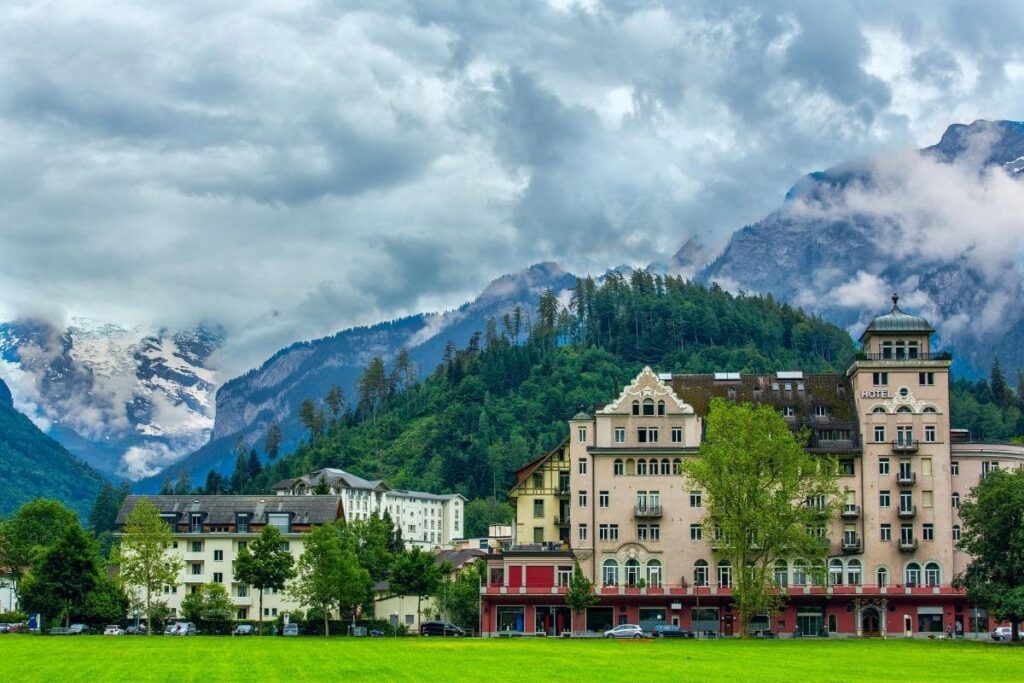
Spiez
This lovely little town in the Swiss Alps has plenty to offer, from hiking and biking to swimming and sunbathing. And of course, there’s plenty of delicious food and drink to be had!
Here are just a few of the best things to do in Spiez:
- Hike up to the Castle: Spiez Castle is a must-see, and the hike up is well worth it for the stunning views.
- Visit the Museum: Learn about the history of Spiez at the town’s Museum am See.
- Swim in the Lake: Take a dip in Lake Thun, or relax on one of the many beaches.
- Rent a Bike: There are plenty of bike paths to explore, or you can just ride around town.
- Enjoy the Food: From fondue to Raclette, there’s no shortage of delicious things eat in Spiez.
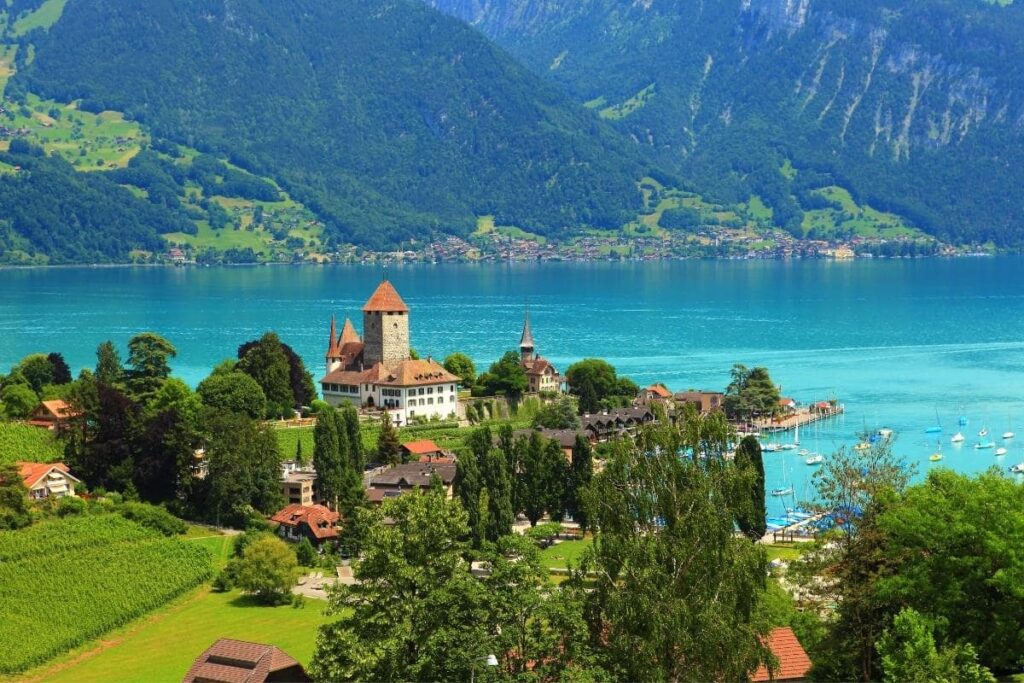
St Moritz
This chic Swiss resort town is known for its high-end shops and luxurious hotels, but there’s plenty to keep you entertained even if you’re a backpacker on a budget!
If you’re looking for a little culture, head to the Engadiner Museum. Located in a beautiful 17th-century building, the museum houses an impressive collection of local art and artefacts. Best of all, admission is free!
For something a little more active, take a hike up Piz Nair. This popular mountain offers stunning views of the surrounding area, and it’s a great workout too. Once you reach the top, be sure to stop by the small cafe for a well-deserved break.
And finally, no trip to St Moritz would be complete without indulging in some of the town’s famous glacier ice cream. Made with milk from cows that graze on the local glaciers, this creamy treat is definitely worth splurging on. Just be sure to get it before it melts!
Need a hostel in St Moritz? We loved Hostel By Randolins! ➡ BOOK NOW!
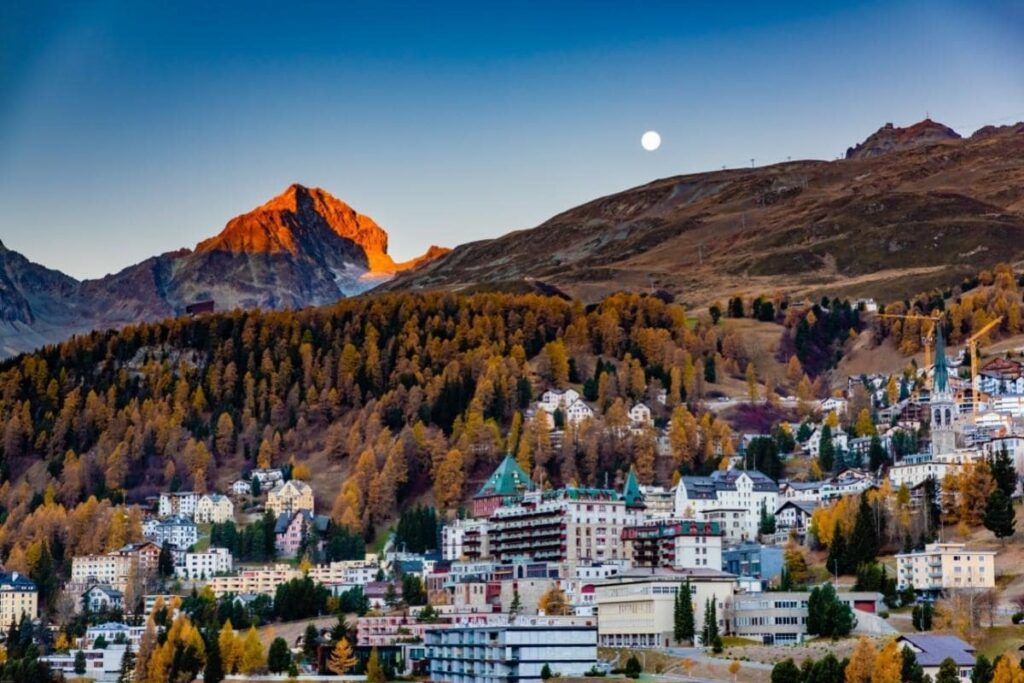
Basel
Basel is a great city for visitors of all ages. If you’re looking for things to do, here are some suggestions:
- Take a walk or bike ride along the Rhine River. You’ll get some exercise and fresh air, and you’ll be able to see some of Basel’s most famous landmarks, like the Munster Cathedral and Basel Zoo.
- Visit the old town. Basel’s old town is full of charming cobbled streets and historic buildings. Be sure to stop by the Town Hall, which dates back to the 14th century.
- If you’re feeling adventurous, take a day trip to Stein am Rhein. This quaint village is just a short train ride from Basel, and it’s well worth the journey. With its picturesque houses and medieval castle, Stein am Rhein will make you feel like you’ve stepped back in time.
- Spend an afternoon at one of Basel’s many museums. The city is home to a number of world-class museums, including the Kunstmuseum Basel (the Museum of Fine Arts) and the Natural History Museum.
- For something truly unique, go on a ghost tour of Basel!
🚝 Need to buy your interrailing pass? I recommend checking this website for the best discounts and deals!
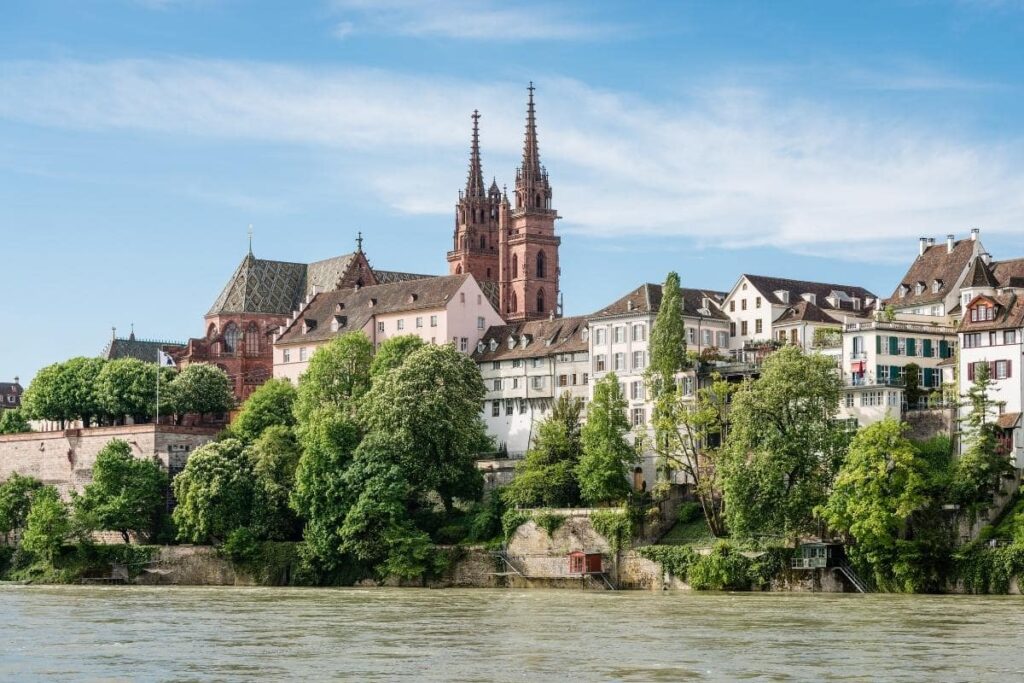
How much does interrailing Switzerland cost?
The truth is, Switzerland is expensive. According to Swissinfo.ch, Switzerland is one of the most expensive countries in the world. Not the best news for a budget backpacker, right? But, of course, there ARE ways to keep the costs down and interrail Switzerland on a budget.
If you really do want to stick to a budget in Switzerland, I’d recommend saving at least £60-80 per day. This includes your accommodation, food, activities and everything else in between. Want more than a dorm room and home-cooked food? You’re going to need to budget at least £100+ a day.
Want to interrail on a budget? I’ve got you covered. Check out my recent post: How to Interrail on a Budget: Interrail Europe CHEAP! (2022)
Interrailing Switzerland: FAQs
1) Buying your Interrail Pass
If you’re planning on doing some rail travel around Europe, then an Interrail pass is definitely the way to go. You can buy passes for 3 days, 7 days, or even a whole month, and they give you unlimited travel on most trains across Europe.
Not only that, but Interrail passes also come with a bunch of other benefits, like discounted rates on ferries and buses, and discounts at hostels and hotels. Plus, if you’re under 26 years old, you get to travel for free on Friday nights and get a discounted pass!
So if you’re planning a European adventure, make sure to check out Interrail passes – they’ll save you time and money, and help you have the trip of a lifetime.
🚝 Need to buy your interrailing pass? I recommend checking this website for the best discounts and deals!
2) Is it worth getting an interrail pass to travel around Switzerland?
This depends on the duration of your trip, and whether or not you are only visiting Switzerland. If you are planning on travelling to Switzerland or Europe for longer than a week, I would recommend getting an interrailing pass.
However, if you’re visiting for a shorter amount of time, such as 2-5 days, it may work out cheaper to buy individual high-speed train tickets.
Don’t forget there are always offers on interrailing passes, as well as the Youth Discount, so if you’re travelling Europe for more than 5 days, I would recommend purchasing an interrail pass.
➡ Don’t forget to pre-book your accommodation! You can check out the best hostels in Switzerland here.
2) How do I book tickets to Interrail Switzerland?
Once you’ve bought your interrailing pass and have a destination plan, you can book your seat reservations. Your interrail pass is activated when you reach the first location that isn’t your home country/city.
Have a look at Interrail’s train timetable to find times and destinations. Most trains will require a seat reservation (especially high-speed and sleeper trains). Slower train seat reservations are usually cheaper, or in some cases, free.
➡ Need to hire a car in Italy? We rent our cars all over Europe from this company. They’re reliable, cheap and have car rentals all over the world! 🚗 LOOK AT CAR HIRE PRICES NOW!
3) What tours should I do in Switzerland?
Looking to book a tour whilst interrailing Switzerland? Tours are one of the best ways to see the hidden gems of the country you are visiting. If you’re travelling during peak season, I highly recommend pre-booking your tours to ensure you don’t miss out!
When travelling, we use this company to book our tours. Tours include skip-the-line tickets to the world’s most iconic attractions, walking tours by top local experts, immersive food and beverage tours, cooking and craft classes, bucket list experiences, and niche offerings you won’t find anywhere else! ➡ You can check out available tours in Switzerland with prices here!
4) Do I need a SIM card to visit Switzerland?
If you’re not from Switzerland, it’s worth downloading an eSIM on your phone to ensure you can use it for directions and avoid roaming charges as soon as you arrive.
ESIMs are easy to download and ready to use within a few minutes of purchasing! Plus, there are eSIMs available for the entire continent of Europe, so there’s no longer a need to hunt down free Wifi! ➡ You can check out the prices and packages for eSIMs here!
Interrailing Switzerland: In A Nutshell
If you’re looking for an amazing and (semi) affordable European trip, I highly recommend interrailing through Switzerland. The views are unbeatable and the people are incredibly welcoming.
Oooh, and if you get your Switzerland interrail pass, make sure to DM me on Instagram so I can see your photos! 😀 The scenery is beautiful and there’s something for everyone – whether you want to ski in the Alps, explore a charming medieval village, or just relax by the lake. It’s by far one of my favourite European countries.
Don’t forget, I’ve written an interrailing guide for Italy, France and Spain too! Check them out to plan your interrail itinerary.
Happy travelling!
Jennie 😀 x
LIKE THIS POST? PIN IT!
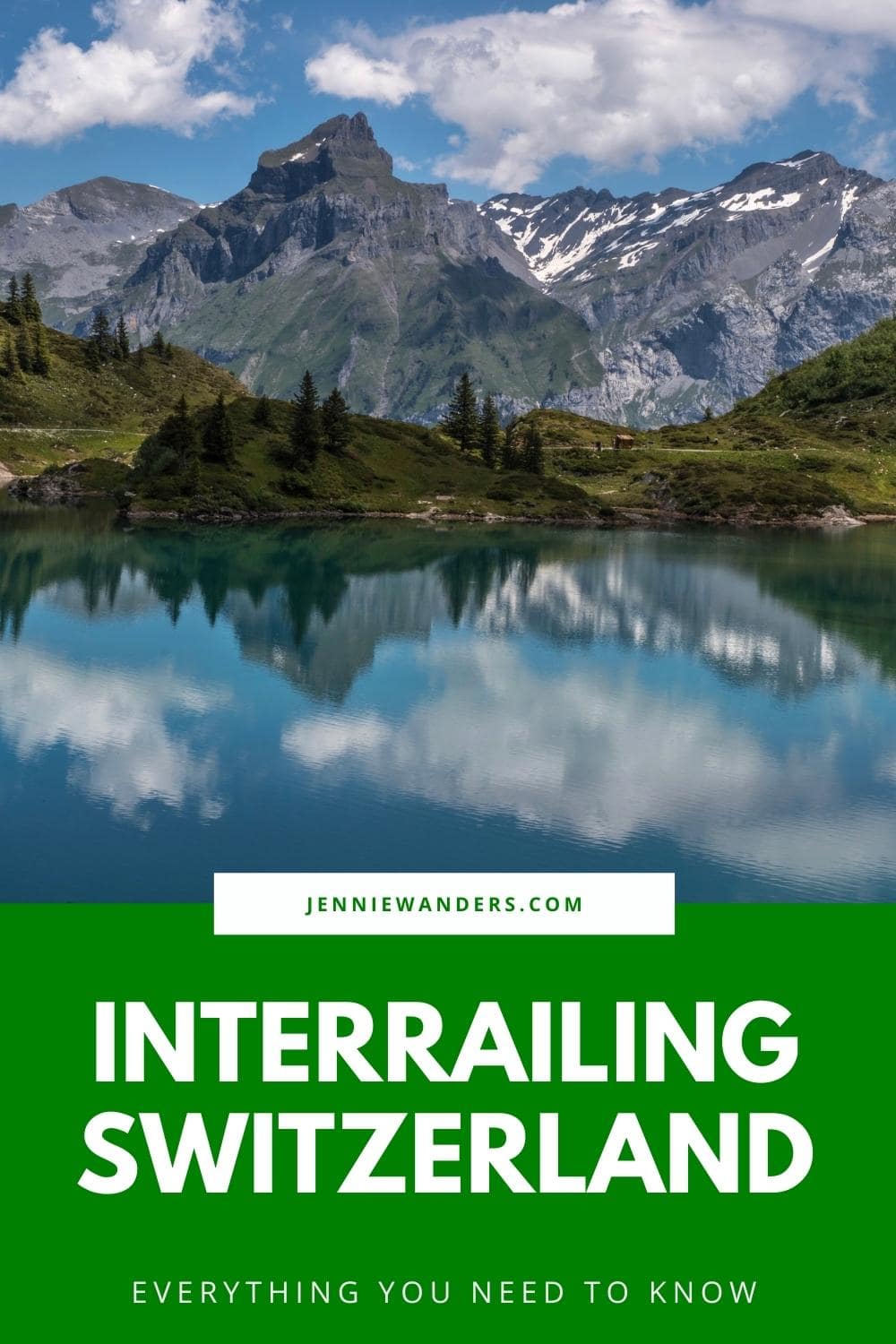
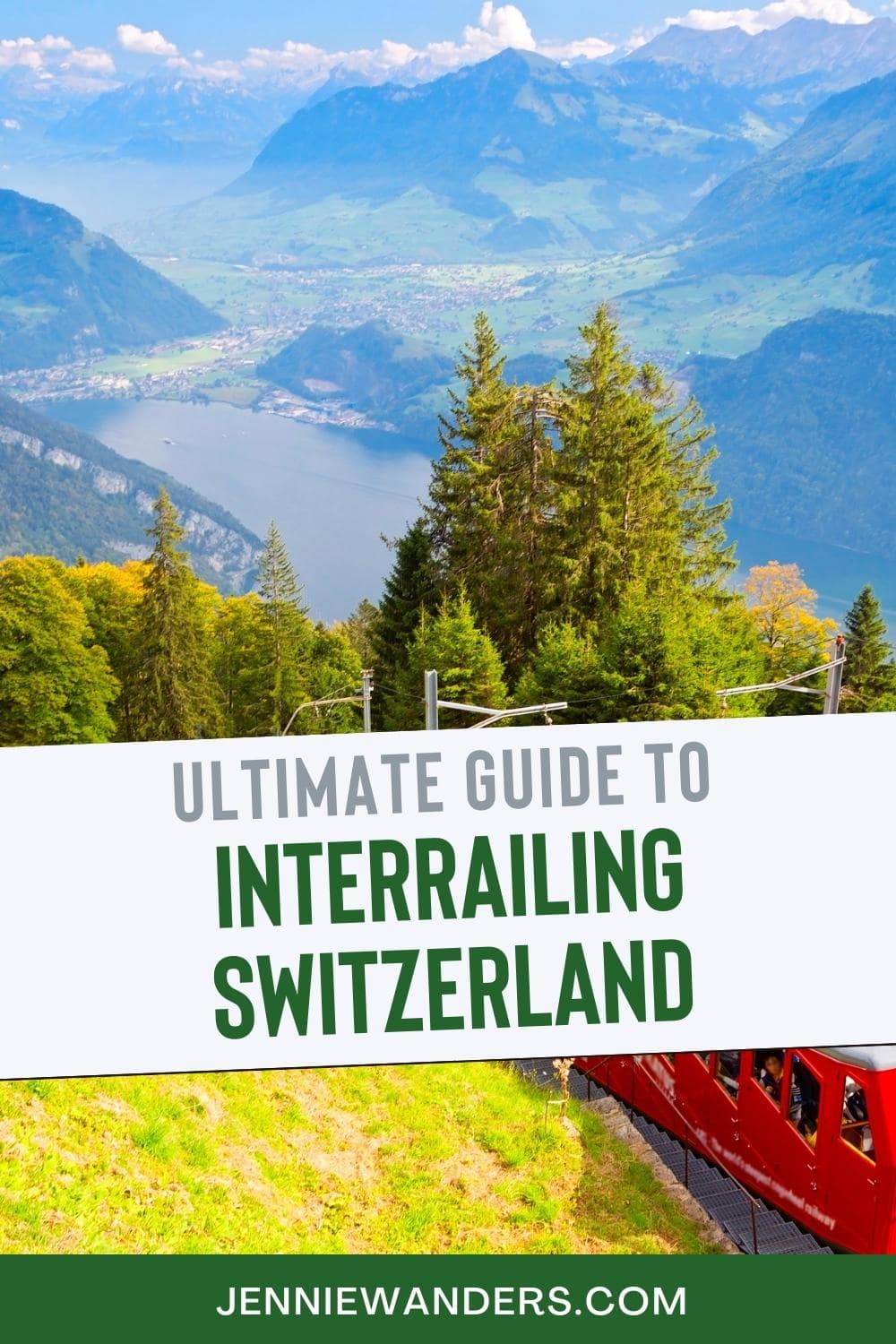
MEET THE AUTHOR!

Hi! I'm Jennie! As a part-time travel blogger based in London, I'm using my 10+ years of travel expertise to encourage & inspire you to step out of your comfort zone through sustainable, mindful and purposeful travel.
If I'm not writing, I'm either reading, drinking coffee or taking a wild swim (all at the same time if I'm feeling impressive).

